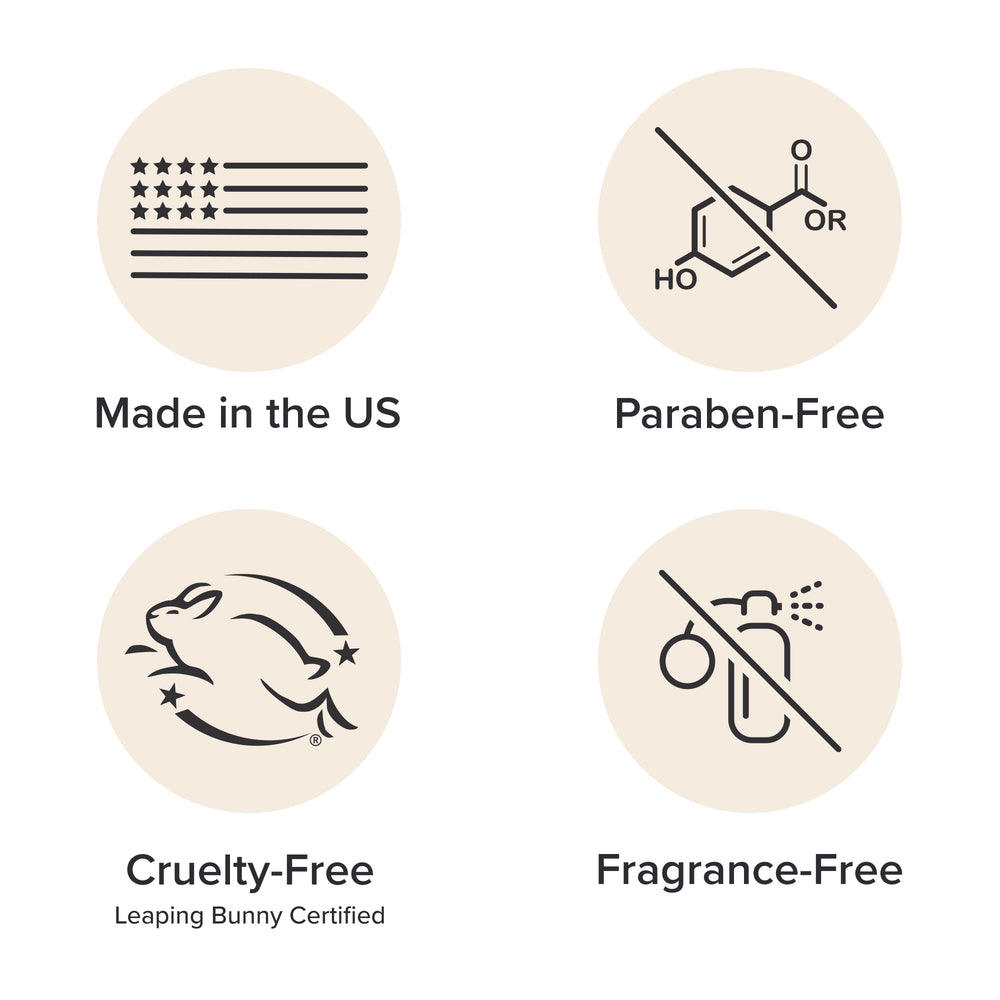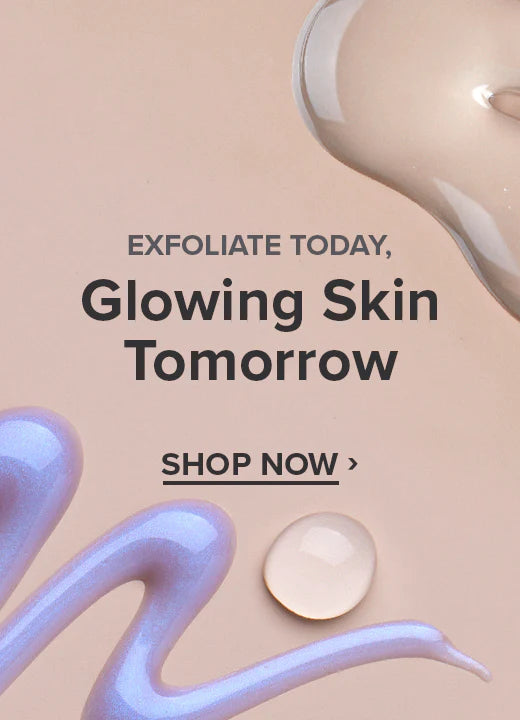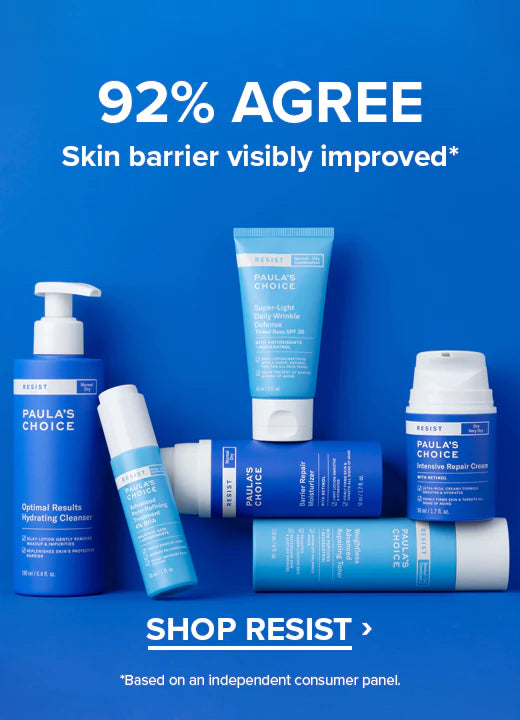Written by: Bryan Barron
Medically Reviewed by: Debra Jaliman MD Board-Certified Dermatologist
Updated on: 1/31/2024
In this article:
What is salicylic acid?
Is salicylic acid a BHA?
What does salicylic acid do?
Salicylic acid benefits
Salicylic acid for blackheads
How to use salicylic acid
Cleanser with salicylic acid
Can I use salicylic acid with niacinamide?
Can you use salicylic acid while pregnant?
Salicylic acid side effects
Salicylic acid is often recommended as a treatment for breakouts or other skin concerns, but have you ever wondered what it is and exactly how it works? We’ve got the details on this remarkable ingredient, plus research-backed recommendations on expertly formulated salicylic acid products so your skin gets the most from it (4).
What is salicylic acid?
Salicylic acid is part of the family of hydroxy acids and is a desmolytic ingredient. That means it targets certain protein bonds in skin, known as desmosomes, that keep dead cells clinging to skin instead of sloughing off. Skin’s natural shedding process can become faulty due to age, sun damage, and problems like acne and excess oil. Exfoliating helps restore this natural ability (2).
Is salicylic acid a BHA?
Salicylic acid is a beta hydroxy acid, or BHA. It is unique because it not only loosens the bonds between dead skin on the surface but also deep in the pore lining, where spent cells mix with oil and debris, becoming trapped below the surface. Left unchecked, all this buildup leads to dull, rough skin and clogged pores, setting the stage for blackheads and bumps.
Compared to water-soluble alpha hydroxy acids, this type of acid is oil soluble, so it’s able to get through the oil, thinning it so it can flow freely to skin’s surface where your cleanser washes it away. Its oil-soluble nature makes it preferred for oily, breakout-prone skin, and it’s the reason medicated salicylic acid products for acne work so well; however, all skin types can benefit from this ingredient.
What does salicylic acid do?
Before we list the benefits of using this ingredient, there’s a formulary requirement you need to know: In order to exfoliate, it must be within the pH range research has shown is most effective. The best leave-on products have a pH between 3 and 4, ideal for effectiveness but also gentle on skin, whose pH is naturally acidic (1). Rinse-off products tend to have a higher pH, so you won’t get much of an exfoliation benefit, but your skin will reap soothing and calming benefits.
Along with the pH, concentration matters, too! For exfoliating and dealing with clogged pores and rough texture, use a leave-on exfoliant that contains a 1–2% concentration (5). If you have more stubborn or advanced concerns around pores and signs of aging, concentrations between 4–9% can make a beautiful difference.
What about products with 0.5% salicylic acid? This amount can provide slight exfoliation if the pH range is right and it’s left on skin for a while, but whether rinse-off or leave-on, you can primarily count on this amount for skin-soothing, which happens on contact (6).
Salicylic acid benefits
Along with being an effective exfoliant, salicylic acid benefits skin by:
- Minimizing enlarged pores
- Diminishing the look of fine lines and wrinkles
- Visibly reducing redness and calming stressed skin (3)
- Reducing excess oil in the pore
- Lessening factors in skin that trigger acne
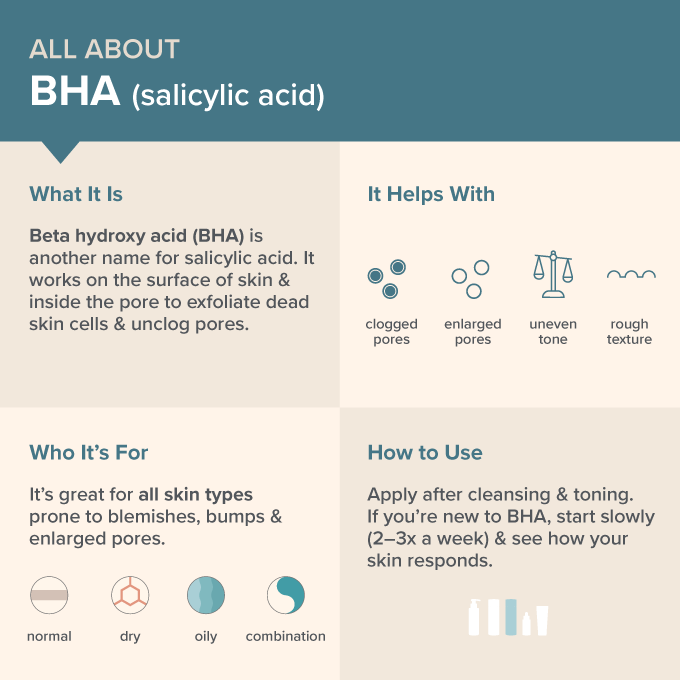
Salicylic acid for blackheads
If you have blackheads, using a well-formulated, leave-on salicylic acid exfoliant not only helps dissolve existing blackheads, ongoing use helps keep new ones from forming in the pores. For best results, apply the exfoliant to cleansed skin once or twice daily.
How to use salicylic acid
Paula’s Choice offers several salicylic acid products (also known as BHA) formulated using the ideal concentration and pH range for impressive results. All skin types will benefit from using a lightweight salicylic acid liquid exfoliant or exfoliating toner because of the refined, healthy glow it creates.
If you have concerns about large pores and more advanced signs of aging, consider using a higher strength serum with salicylic acid a few times per week or consider an at-home peel with salicylic acid that you use once weekly, leave on for several minutes and then rinse.
If your skin tends to be more sensitive and redness-prone, try incorporating a 1% salicylic acid leave-on exfoliant into your routine.
Smaller areas of extra-stubborn concerns such as persistent bumps and clogs will find relief with a very high strength 9% salicylic acid serum, which can be used as needed and is even suitable for skin prone to milia.
Apply a leave-on product to cleansed skin once or twice daily (experiment to see which frequency of application works best for you). A rinse-off salicylic acid peel can be used once weekly or every other week, depending on your skin’s needs. Follow with the rest of your skin care routine and you’ll see improvements as soon as overnight!
If you're on-the-go or traveling and want to make sure you can fit in exfoliation, use an exfoliating toner pad by simply swiping it across your face to tackle clogs and oil from anywhere.
Note: if you’re new to using a BHA exfoliant, begin by applying every other day, morning or evening, and increase frequency of use once you see how your skin responds.
Cleanser with salicylic acid
Many brands sell facial cleansers with this ingredient, often mixed with harsh scrub particles. The fact is blackheads can’t be scrubbed away (their “root” is further in the pore, where scrubs can’t reach) plus this type of cleanser’s contact with skin is too brief for the acid to penetrate pores to break up the clog.
A gentle, water-soluble cleanser medicated with salicylic acid can provide some soothing benefits but won’t reduce existing blackheads or stop new ones from forming.
Can I use salicylic acid with niacinamide?
Yes, you can use salicylic acid with niacinamide to maintain healthy, smooth skin. In fact, this pairing is especially great for oily and clog-prone skin because salicylic acid helps clear the debris that clogs and stretches pores and then niacinamide goes in to restore pores back to their normal shape and size.
For optimal results, layer the two ingredients as separate steps, rather than mixing the formulas together. First, apply your salicylic acid exfoliant, then apply your niacinamide serum, booster or treatment. For daytime, always finish with sunscreen as your last step.
Using these ingredients together is safe, however if you have extra-sensitive skin, you may find that alternating your salicylic acid product and your niacinamide product by using one in the morning and one at night works best.
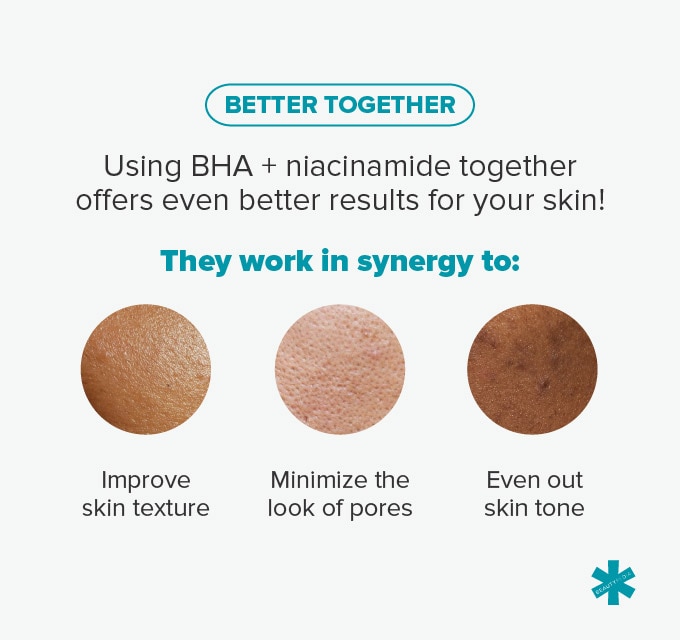
Can you use salicylic acid while pregnant?
Yes, you can use salicylic acid while pregnant – the amount you use is important, though. We consulted with the American College of Obstetricians and Gynecologists; the amount of salicylic acid used in most skin care products are considered low risk for use when pregnant. It is advised that you seek out products containing 1-2% salicylic acid, and use it on small areas, like the face, as needed.
Salicylic acid side effects
Salicylic acid is considered safe to use in the amounts commonly found in skin care products; however, if you have a salicylate allergy, check with your physician before using any products that contain salicylic acid.
The other precaution–which applies to all leave-on exfoliants–is to protect your fresh, bump-free skin with a broad-spectrum sunscreen every day.
Learn more about exfoliants.
Learn more about our editorial mission.


